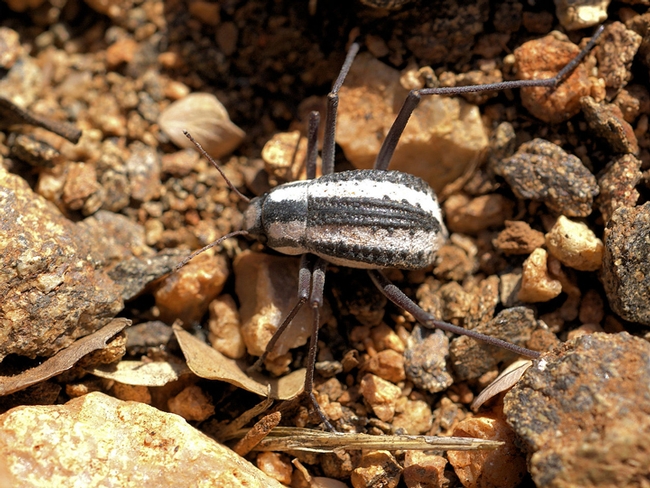- Author: Kathy Keatley Garvey
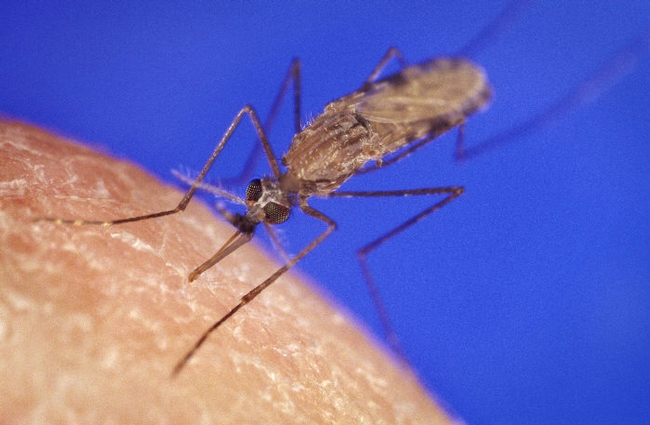
"I've never been bitten by a mosquito," Carey told the standing-room crowd at his presentation on “African Odyssey: Wildlife Adventures, Natural Wonders and Indigenous Peoples” last Wednesday at Briggs Hall, UC Davis campus.
Carey shared and narrated video and pictorial content that he and his wife, Patty, recorded during vacations or on weekend trips during his annual teaching stints on the African continent over the last seven years.
"We drove over 12,000 miles in Sub-Sahara Africa, mostly self drive, including visits to or safaris in 25 national parks and 11 Unesco World Heritage sites in Kenya, Uganda, Botswana, Ethiopia, South Africa, Namibia, Congo, Swaziland, Lesotho and Tanzania," Carey said.
The Careys captured images of tigers, elephants, gorillas, zebras, and a white rhino, as landscapes, people and insects.
The professor's public presentation drew the audience's undivided attention. No one—no one—picked up a cell phone, much less checked it.
He divided his fast-paved program into three parts:
Part 1: Wildlife adventures, including such topics as mountain gorillas in the Congo, floodlit watering holes, wildebeest migration, Okavango Delta, elephant herds and a wild dog pack in Botswana, plus overland, balloon and horseback safaris, and Namib and Kalahari Desert road trips.
Part 2: Natural wonders and sightseeing, centering on Table Mountain, Victoria Falls, Capes of Good Hope and Agulhas, Zanzibar, genocide and apartheid museums, livestock markets and a sudden flash flood.
Part 3: Indigenous cultures, covering singing fishermen of Lake Kivu, tribal peoples including Batwa pygmy, Hadza bushmen, Himba, Mursi and Dasenich tribes, and township tours of Langa and Soweto slums.
The Careys met Mursi women of Ethiopia who adorn their bodies with lip plates, a status symbol. The lip plates, usually made from clay or wood, are disks they insert in a pierced hole in either the upper or lower lip, or both.
"...about 6 to 12 months before marriage, a young (Mursi) woman has her lip pierced by her mother or one of her kinswomen, usually at around the age of 15 to 18. The initial piercing is done as an incision of the lower lip of 1 to 2 cm length, and a simple wooden peg is inserted. After the wound has healed, which usually takes between two and three weeks, the peg is replaced with a slightly bigger one. At a diameter of about 4 cm, the first lip plate made of clay is inserted. Every woman crafts her own plate and takes pride in including some ornamentation. The final diameter ranges from about 8 cm to over 20 cm.--Wikipedia.
You can view Carey's entire presentation at https://youtu.be/yxMj3c-kcxE.
Known for his innovative and exemplary teaching, Carey received the 2015 Distinguished Teaching Award from the Entomological Society of America for his technological innovations, creativity and excellence in the UC system and beyond. He has taught video instruction methods for the 9-university Consortium for Advanced Research Training in Africa, including Nairobi and Uganda for seven years.
Carey researches insect demography, mortality dynamics, health span and aging. He and population biologist Deborah Roach of the University of Virginia are authors of a soon-to-be-published book Biodemography: An Introduction to Concepts and Methods (Princeton).
A member of the UC Davis since 1980, Carey directed the federally funded program, “Evolutionary Ecology of Lifespan,” from 2003 to 2012, with projects ranging from the evolutionary of aging and the biodemography of nematodes and fruit flies to the longevity of red deer and soay sheep in Scotland and the health span in the Tsimani people of Bolivia.
Will he be presenting the African odyssey program again? Yes, he's willing to share. “The main purpose of my talk is to enlighten everyone about the remarkable—and moderately priced—travel opportunities in eastern and southern Africa,” Carey said. Contact him at jrcarey@ucdavis.edu.
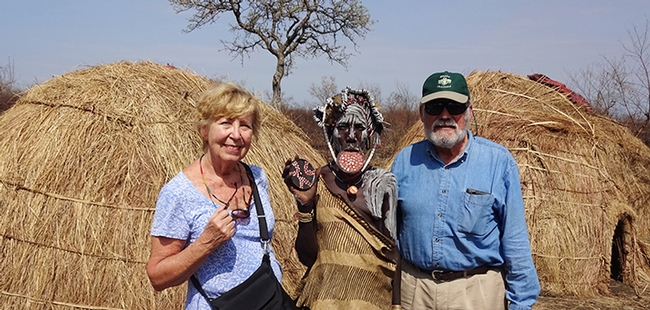
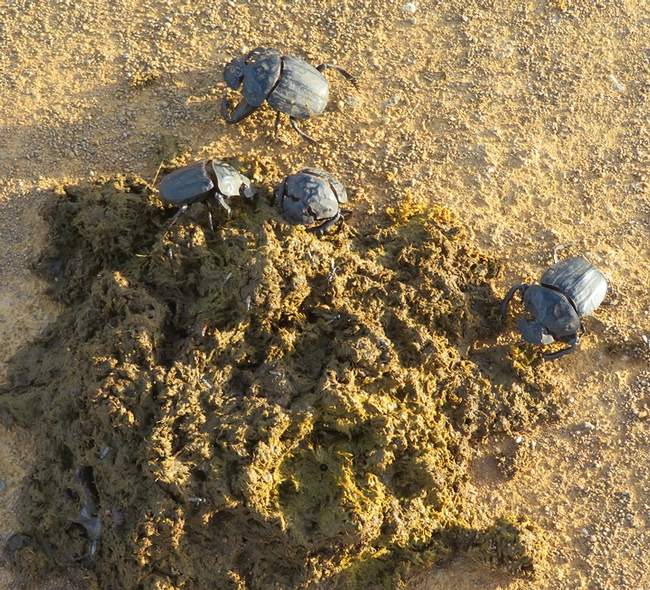
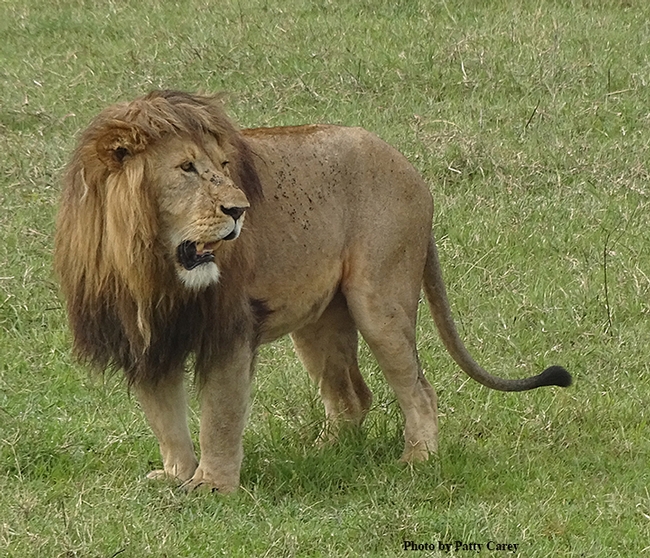
- Author: Kathy Keatley Garvey
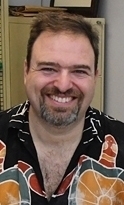
They range in topics from fruit flies to spider glue to an African odysssey.
The seminars take place at 4 p.m. every Wednesday in Room 122 of Briggs Hall, beginning April 3 and ending June 5.
The schedule:
Wednesday, April 3
Alistair McGregor, Oxford Brookes University, England
Topic: "Differences in Tartan Underlie the Evolution of Male Genital Morphology Between Drosophila Species"
Host: Geoffrey Attardo, assistant professor, UC Davis Department of Entomology and Nematology
Wednesday, April 10
Monique Rivera, UC Riverside
Topic: "How Agriculture Influences the Structure of Belowground Communities"
Host: Elvira de Lange, postdoctoral fellow, UC Davis Department of Entomology and Nematology"
Wednesday, April 17
Bert Hölldobler, Arizona State University
Topic: "The Superorganism: Communication, Cooperation and Conflict in Ant Societies"
Host: Robert Page, distinguished emeritus professor, UC Davis Department of Entomology and Nematology and provost emeritus, Arizona State University
Wednesday, April 24
Sarah Stellwagen, University of Maryland
Topic: "Towards Spider Glue: From Material Properties to Sequencing the Longest Silk Family Gene" (Link)
Hosts: Hanna Kahl, doctoral student in entomology, and Jason Bond, the Evert and Marion Schlinger Endowed Chair in Insect Systematics, UC Davis Department of Entomology and Nematology
Wednesday, May 1
Andrew Nuss, University of Nevada, Reno
Topic: "Breaking Insecticide Resistance: Novel Strategies for Insect Pest Management"
Host: Geoffrey Attardo, assistant professor, UC Davis Department of Entomology and Nematology
Wednesday, May 8
Colin Orians, Tuffs University, Massachussetts
Topic: "Mitigating the Effects of Climate Change on Tea Agroecosystems in China"
Host: Rachel Vannette, assistant professor, UC Davis Department of Entomology and Nematology
Wednesday, May 15
Erin Wilson-Rankin, UC Riverside
Topic: "Ecological Factors Underlying Diet Shifts in California Pollinators"
Host: Rachel Vannette, assistant professor, UC Davis Department of Entomology and Nematology
Wednesday, May 22
James R. Carey, distinguished professor of entomology, UC Davis Department of Entomology and Nematology
Topic: African Odyssey: Natural Wonders, Wildlife Adventures, and Indigenous Peoples"
Wednesday, May 29
Laurence Packer, York University, Canada
Topic: "Extreme Bees in Extreme Environments: Bee Biogeography in the Atacama Desert"
Hosts: Leslie Saul-Gershenz, associate director of research, Wild Energy Initiative, John Muir Institute of the Environment, UC Davis, and Steve Nadler, professor and chair, UC Davis Department of Entomology and Nematology
Wednesday, June 5
Immo Hansen, New Mexico State University
Topic: "Toward Implementation of Mosquito Sterile Insect Technique"
Host: Geoffrey Attardo, assistant professor, UC Davis Department of Entomology and Nematology
More information is available from Attardo at gmattardo@ucdavis.edu.
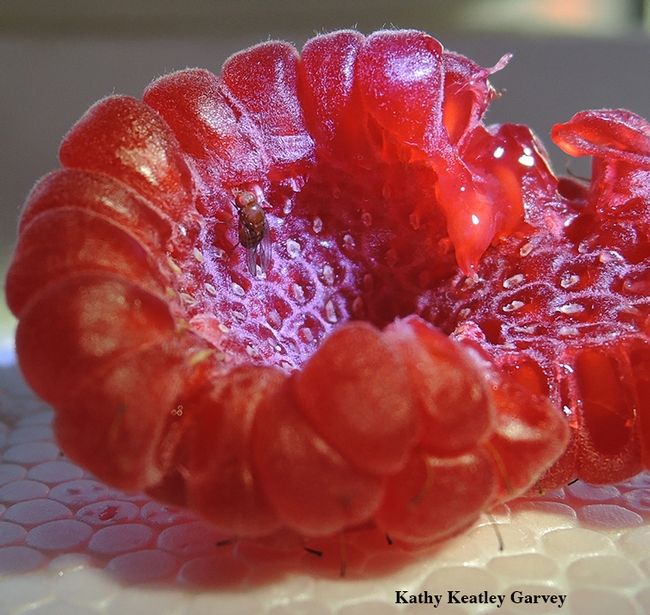
- Author: Kathy Keatley Garvey
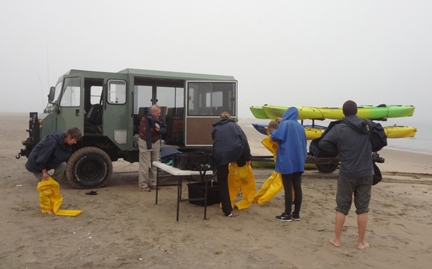
If you're James R. Carey , distinguished professor of entomology at UC Davis, and you're in Africa, you also video them--insects like fog-harvesting Namib Desert beetle.
The Namibian Beetle (Stenocara gracilipes) lives in the Namib Desert, one of the driest deserts in the world. Located on the southwest coast of Africa, the desert receives only 0.55 of an inch of rain a year, according to Wikipedia. The beetle survives by harvesting the early morning fog, which is why it's called the fogstand beetle or "the fog-harvesting Namib Desert beetle."
Carey will show a video of the beetle, along with bigger critters, including elephants, giraffes, lions, gorillas, chimpanzees, next Wednesday, May 6 when he gives a special presentation at UC Davis on “African Odyssey: A Natural History and Cultural Journey Through Uganda, Namibia and Kenya.”
The presentation, open to all interested persons, will be from 12:10 to 1 p.m. in 122 Briggs Hall, Kleiber Hall Drive. Sponsored by the UC Davis Department of Entomology and Nematology, it will be video-recorded and posted on the Internet for later viewing.
Carey's highly produced, digitally sophisticated production will include photographs, video and audio of wildlife, people and places that he and his wife, Patty, experienced while traveling in three African countries.
The African country of Namibia, one of the least densely populated countries in the world, should be on everyone's bucket list, Carey says.
"Africa is a cultural and natural history treasure trove that far exceeded our expectations on all of our road trips through several countries. One of the continent's best kept secrets is the country of Namibia in the southwest with its stunning beauty, friendly people, impressive roads and national parks teaming with wildlife. It is on few people's bucket list of places to visit---but it should be at the top of the list for Africa."
Carey, who received the 2015 Distinguished Teaching Award from the Pacific Branch of the Entomological Society of America (PBESA) for his technological innovations, creativity and excellence in the UC system and beyond, has taught video instruction methods for the 9-university Consortium for Advanced Research Training in Africa, including Nairobi, Kampala and Uganda for several years.
The presentation will include includes material from their 2,000 mile road trip in Uganda (2014) to see the critically endangered mountain gorillas in the Bwindi Impenetrable Forest, the Batwa Pigmys in Mgahinga National Park, chimpanzees at the Budongo Field Station, and wildlife in Murchison Falls National Park (Nile headwaters).
Their 1,800 mile road trip around Namibia (2015) included safaris in Etosha National Park, an overland expedition to see the desert elephants in Twyfelfontein, a drive along the Skeleton Coast, a walk through the world's largest fur seal colony at Cape Cross, a kayak adventure among swimming seals in Walvis Bay, guided tours through Himba and Damara tribal villages, and a trek along the crest of the world's second highest sand dune (Sossusvlei's Big Daddy).
He also will engage his audience with the sights and sounds of the fog-harvesting Namib Desert beetle, the “click language” of bushmen, ancient petroglyphs, and the professional Safari Cats Dancers & Acrobats from Nairobi.
Professor Carey videographed the trip, while his wife Patty and sister-in-law Barbara Brown captured the still photographs.
Namibia, a former Germany colony, is named for the Naimb Desert, considered the oldest desert in the world. Only 2.1 million people live in Namibia, one of the world's smallest countries.
Carey last year received the 2014 Distinguished Teaching Award from the UC Davis Academic Senate, an honor given to internationally recognized professors who excel at teaching.
(Editor's Note: The May 6th presentation is online at https://www.youtube.com/watch?v=meM3u6CW0Rs)
